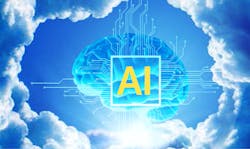Fasten your seatbelts: In the next five years, networking will change more than it has in the entire business lifetime of any system integration company – chiefly due to AI and cloud computing. Networking will become vastly more complex, while at the same time, that complexity becomes invisible. No single perspective can encompass all the thinking that this magnitude of change requires. It will be a bumpy business ride, because so many things will be changing.
The good news is that the combined effect of today’s and tomorrow’s technology trends will make technology utilization easier. The more advanced technology gets, the easier it must become to remain usable; thus, a key transformation – which is already happening – is from passive networks to AI-driven networks. Juniper Networks has trademarked the term “self-driving network”, and characterizes this new type of network as “operationally efficient, solidly reliable and remarkably adaptive.” One objective of such a network is to “abolish operational complexity regardless of the type and volume of network traffic.” Such a network would be an integrator’s dream, especially for high-megapixel video camera systems.
“The Self-Driving Network will take the heavy lifting out of the hands of IT staff,” Juniper explains on its website (www.juniper.net/us/en/insights/the-self-driving-network). “[The network] will self-configure, monitor, manage, correct, defend and analyze with little human intervention. It will be predictive and adaptive to its environment, optimizing and personalizing the experience for the end-user and for the situation.
“When traffic spikes occur on today’s networks, it is difficult to distinguish a distributed DDoS attack from widespread downloading of the new Lady Gaga album,” it continues. “Using machine learning algorithms that interpret vast amounts of traffic behavior data, the Self-Driving Network will predict performance issues before users are affected. In this example, connections with algorithms that scrape Twitter feeds will confirm the hypothesis: Have hacking groups been threatening action against a particular enterprise; or have fans been clamoring for Lady Gaga’s album in the weeks leading up to the spike? The Self-Driving Network will analyze and adapt accordingly, either shutting down ports to isolate the DDoS attack or adding bandwidth to accommodate the surge in album downloads.”
System-Friendly Networks
For two decades, the security industry has been told to make “network-friendly” products and systems. Now, it turns out we will have system-friendly networks – that is a welcome 180-degree turnaround. An intelligent network will, for example, recognize that the surge in video network traffic is due to a facility’s emergency response activity and prioritize network traffic accordingly.
Still, no network will have infinite capacity and traffic processing capability, so security products and systems will still need to be smart and responsive to the network capabilities of the moment.
AI Emerges
A self-driving network requires artificial intelligence and software-defined network technology. These are emerging technologies which, once in place, will continue to evolve and advance. For electronic security systems that reside (or will reside) on a corporate network, corporate security departments will need to “enroll” their devices and systems in IT’s infrastructure management program to be assured that the networking requirements of the security systems will continue to be satisfied – especially as the networks evolve into intelligent self-driving systems.
At the same time as networks are evolving, IoT platforms are starting to emerge, and cloud-based systems capable of providing rea-time risk data and situation awareness data are emerging as well. Physical security systems will interface with hundreds and even thousands of data sources, few of which will be procured for or managed by the security function. This is a level of systems integration that we have never seen, and it is on a permanent growth curve.
There will be a time when self-driving networks that physical security systems and application will configure themselves based on the integration requirements of the security systems. Integrations will define the network requirements. This hints at a brighter future for systems integrators who provide value based on the integrations that they design and implement; however, that is not the state of technology now, and it is not the business model of most integrators.
Why IT Will Remain a Challenge for Integrators
Despite the good news about AI-driven networks, self-configuring security appliances, the emergence of new types of data integrations for security and other technology advances, networking – as well as other aspects of information technology – will remain a significant challenge for integrators in the coming years. Here’s why:
1. Existing systems and networks: Most of the current installed base of electronic physical security systems still requires network expertise for effective maintenance, service and expansion – especially for enterprise systems.
2. Unification of identity management: In 80 percent of security incidents, privileged identity compromise is the primary point of breach; thus, identity management must become more central and more robust for both physical and IT security. Consequently, there is a strong spotlight on identity management across the board, and a renewed interest in unifying identity management for physical and IT security. This has not been a strong suit of many security systems integrators.
3. Machine authentication: The authentication of an automated human-to-machine or machine-to-machine (M2M) communication using certificate-based digital credentials is familiar mainly only to security integrators working in the U.S. federal government space, due to the existence of the Federal Cloud and the Federal PKI Infrastructure, and federal requirements for electronic systems deployments. M2M is already a concern for network cameras and mobile devices. Security system use of other IoT devices will continue to expand the need for machine authentication expertise.
4. Software advances and cloud integrations: As applications move to the cloud, so does software integration. Few integrators have experience in qualifying prospective integration candidates, let alone performing such integrations.
The IT capabilities that any individual integrator will require over the next five years will be affected by:
- The customer markets that an integrator pursues;
- How IT evolves in customer organizations, including transitions to the cloud and to AI-driven networks, as well as customer identity management initiatives; and
- Security industry advances in machine authentication, and in self-configuring security devices and systems.
The next article in this series highlights the options for integrators to expand their IT capabilities, including feedback from integrators themselves on how they are assessing and addressing their need for IT knowhow.
Ray Bernard, PSP CHS-III, is the principal consultant for Ray Bernard Consulting Services (www.go-rbcs.com). He is the author of the Elsevier book Security Technology Convergence Insights available on Amazon. Mr. Bernard is a Subject Matter Expert Faculty of the Security Executive Council (SEC) and an active member of the ASIS International member councils for Physical Security and IT Security.




